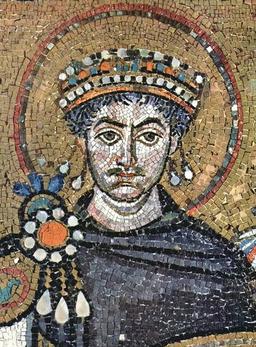
WHI.7-Byzantine Empire
Quiz by Lacie Holmes
Feel free to use or edit a copy
includes Teacher and Student dashboards
Measure skillsfrom any curriculum
Tag the questions with any skills you have. Your dashboard will track each student's mastery of each skill.
- edit the questions
- save a copy for later
- start a class game
- automatically assign follow-up activities based on students’ scores
- assign as homework
- share a link with colleagues
- print as a bubble sheet
- Q1
The capital of the Byzantine Empire was the city of _____.
Constantinople
Moscow
Rome
Athens
30s - Q2
Constantinople straddled the _____ Strait and was situated on both Europe and Asia.
Tiber
Bosporus
Dardanelles
Bering
30s - Q3
Today Constantinople is known as _____.
Constantinople
Moscow
Byzantium
Istanbul
30s - Q4
How did the followers of Eastern Orthodox differ from the Roman Catholics?
belief that Jesus acted to redeem humankind
belief that the Patriarch is the head of the church
belief that the Pope is the head of the church
use of Latin as the language of prayer
30s - Q5
What language was used by the Eastern Orthodox Church?
Greek
Slavic
Arabic
Latin
30s - Q6
The split of the church is known as what?
Eastern Split
Christian Split
Western Schism
Great Schism
30s - Q7
Who was the head of the Byzantine Church?
the Patriarch
the Czar
the Emperor
the Pope
30s - Q8
What religion influenced Russia the most?
Judaism
Eastern Orthodox
Islam
Roman Catholic
30s - Q9
What is the name of this Byzantine domed structure that originally served as a church?
Dome of the Rock
Parthenon
St. Basil's
Hagia Sophia
30s - Q10
What form of writing was developed by Byzantine monks and adopted in Russia and eastern Europe?
hieroglyphs
cyrillic
cuneiform
sanskrit
30s - Q11
Which of the following would most likely be found in Byzantine art?
woven tapestries of emperors
marble states of Greek gods
mosaics of Christian religious figures
portraits of ordinary people
30s - Q12
Why was Constantinople such a prosperous city?
It controlled trade in the Mediterranean.
The pope lived there.
It contained a large amount of gold mines.
It was a trade hub for Europe, Asia, and Africa.
30s - Q13
The Byzantine Empire came to an end in 1453 when the _____ Turks conquered the city of Constantinople.
Ottoman
Arabic
Seljuk
Umayyad
30s - Q14
Art using small pieces of glass and rock to form a picture.
mosaic
stained glass
sculpture
collage
30s - Q15
Which of the following was not a major accomplishment of Justinian
Expansion of trade
Conquest of Russia
Codification of Roman law
Reconquest of former Roman territories
30s